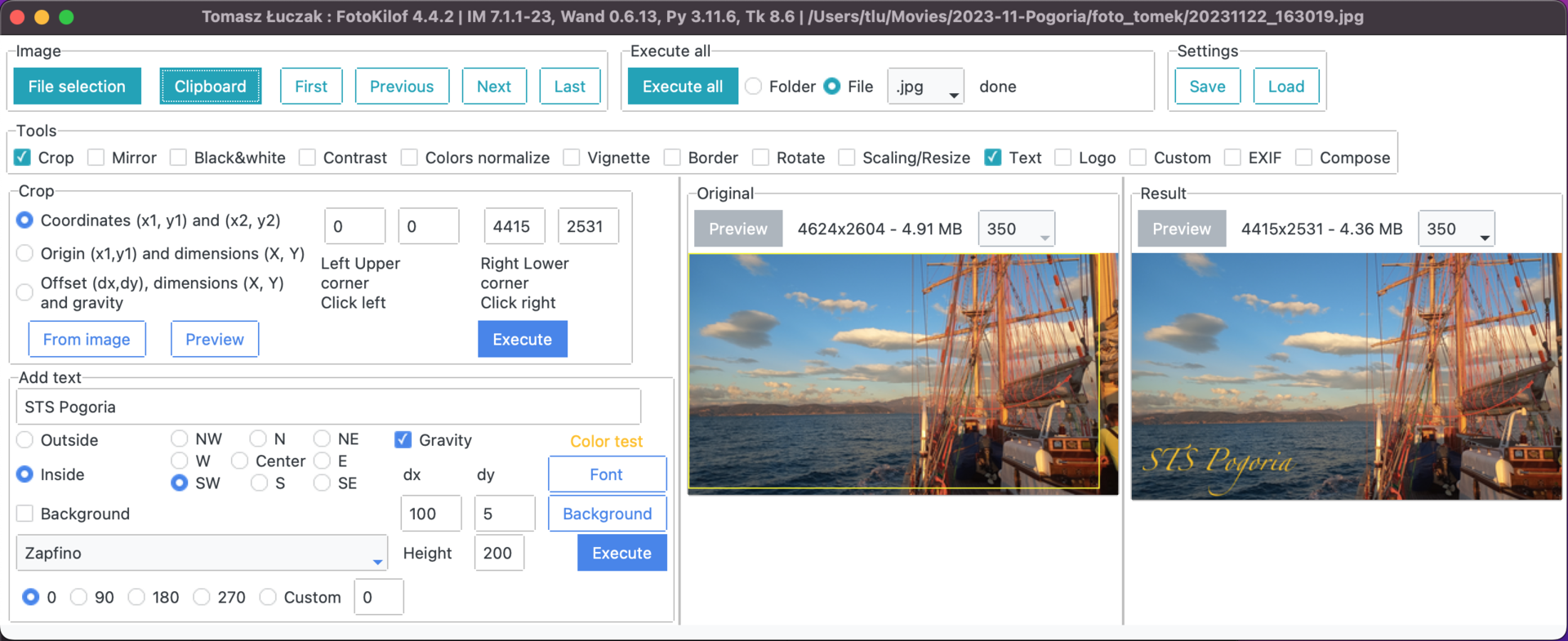
- Imagemagick for mac os x how to#
- Imagemagick for mac os x mac os x#
- Imagemagick for mac os x install#
- Imagemagick for mac os x code#
- Imagemagick for mac os x plus#
MacPorts, as fantastic as it is with its somewhat confusing dependancies, creates an additional layer of FUBAR when things go really wrong.Īnd, *Nix people like it simple, as contradictory as it sounds. I am dealing with installs on private linux servers, and I rather take the direct step in making things work. a lot of that included the massive ghostscript documentation if I remember correctly. I found multpiple installs for ghostscript, for example.
Imagemagick for mac os x install#
The Problem I've been having is a small install base for MacPorts. MacPorts may be easy to use, but it is not bleeding-edge current with its releases. You'll find the shell commands on this page just copy and paste to use.Īfterwards, sudo gem install rmagick works like a charm for me.
Imagemagick for mac os x mac os x#
Please notice that Mac OS X 10.5.4 (or higher), XCode 3.1 (or higher), and X11 is required. I created a set of commands that you can copy-and-paste into a shell script, which should install ImageMagick flawlessly on your Mac. I also wanted to keep the install as small as possible, and therefore I decided against installing the whole ghostscript package (but you may do so if you like). Especially the interdependencies of libjpeg and ghostscript are insane. If you've ever tried to install ImageMagick without Fink or MacPorts, you'll have a quite good chance to go completely nuts.

Use the Move tool (right most selected button in toolbar in the screenshot) to align your layer to the right of the previous one.Seashore will ask you if you want to create a New Layer or Anchor it with the one already there. Copy over the second one into the first one.
Imagemagick for mac os x plus#
It supports layers, filters, channels and supports almost all image formats, plus it has better image / layer selection and resizing tools that may be better suited for your image editing needs. It has better tools much on the lines of popular editors (including shortcuts) and I guess if you try you should be doing just fine without much help from us. Speaking of free GUI tools, Seashore app is an open source project much better at working with images than Preview.app. * Keep this as a Template size, with any others, clearly labelled with their dimensions for future use. Menu > File > Save As… > New name > Whatever file format you want You can scale them by dragging their handles, and nudge them a pixel at a time with your cursor keys. Switch to your blank background image, command v (Paste) each in turn dragging them into position next to each other. Select each of your two images in turn and go command a (Select All) and command c (Copy) Double click on this along with your two existing images to open them in Preview. Make a screensnap: command shift 4 > drag out an area 640 x428 Not strictly necessary but makes life easier.


Imagemagick for mac os x how to#
How to do this with the tools to hand: Preview.
Imagemagick for mac os x code#
I used it on and now the correct code is convert +append a.png b.jpg +append c.tif Alternatively, you could put this in some sort of automator script. This isn't a GUI application, but maybe some others might have a better solution. For example, you can switch to a different image format for the output convert +append a.png b.jpg c.tif With convert, you can do a ton of other things. Alternatively, you append them vertically with -append (instead of +) and a.png will be on top of b.png. To create a new file, c.png, that has the a.png on the left and b.png on the right.

If you have your two 320x428 images, say a.png and b.png, you can do convert +append a.png b.png c.png The actual tool you want to use from Imagemagick is the convert tool. You could also choose to install with brew ( brew install imagemagick). I use the command line tools that come in the Imagemagick package I think I installed it on my system with MacPorts. I often have to do this with images of plots of data.


 0 kommentar(er)
0 kommentar(er)
